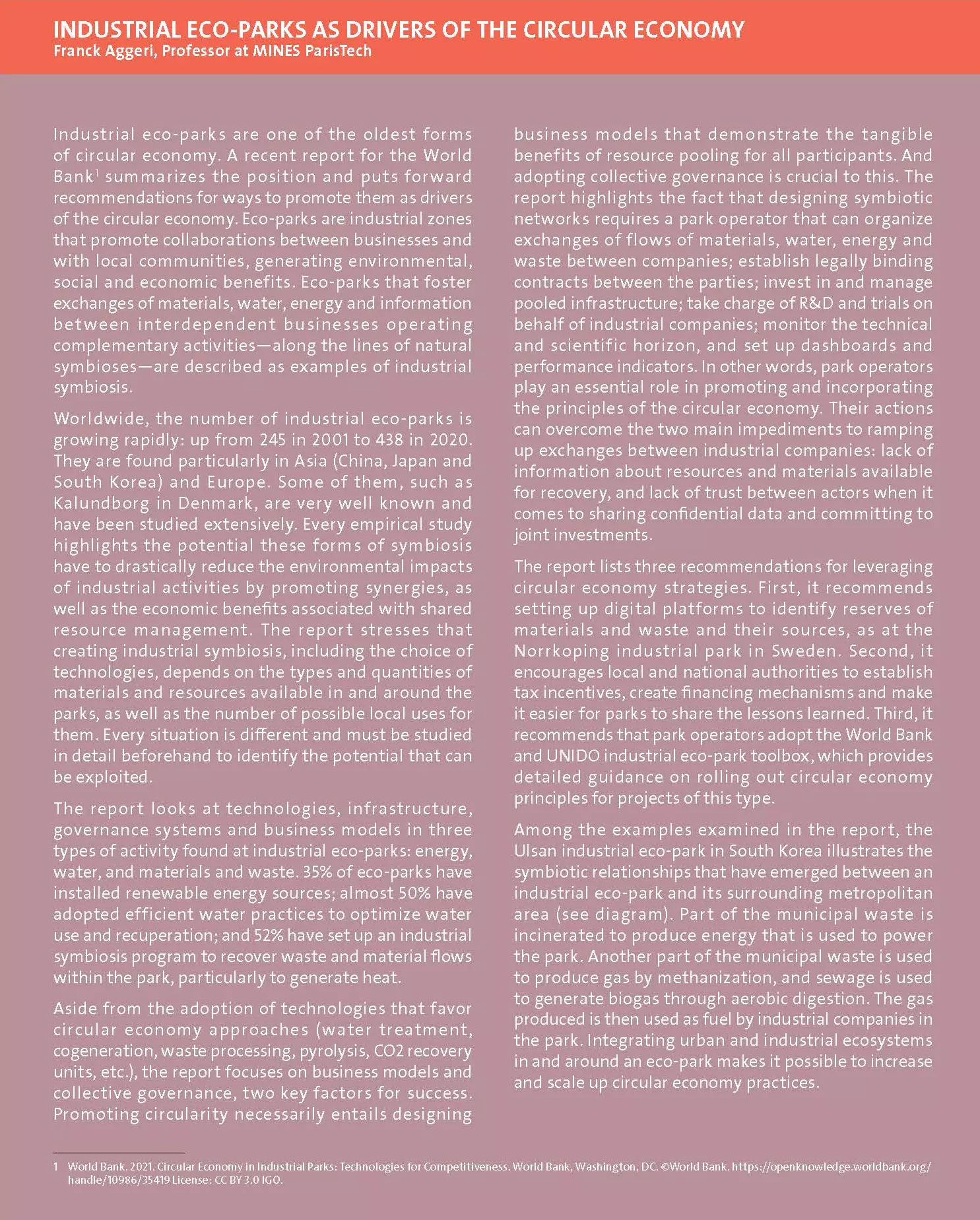Franck Aggeri
Professor at MINES ParisTech
Industrial eco-parks are one of the oldest forms of circular economy. A recent report for the World Bank1 summarizes the position and puts forward recommendations for ways to promote them as drivers of the circular economy. Eco-parks are industrial zones that promote collaborations between businesses and with local communities, generating environmental, social and economic benefits. Eco-parks that foster exchanges of materials, water, energy and information between interdependent businesses operating complementary activities—along the lines of natural symbioses—are described as examples of industrial symbiosis.
Worldwide, the number of industrial eco-parks is growing rapidly: up from 245 in 2001 to 438 in 2020. They are found particularly in Asia (China, Japan and South Korea) and Europe. Some of them, such as Kalundborg in Denmark, are very well known and have been studied extensively. Every empirical study highlights the potential these forms of symbiosis have to drastically reduce the environmental impacts of industrial activities by promoting synergies, as well as the economic benefits associated with shared resource management. The report stresses that creating industrial symbiosis, including the choice of technologies, depends on the types and quantities of materials and resources available in and around the parks, as well as the number of possible local uses for them. Every situation is different and must be studied in detail beforehand to identify the potential that can be exploited.
---
1 World Bank. 2021. Circular Economy in Industrial Parks: Technologies for Competitiveness. World Bank, Washington, DC. ©World Bank. https://openknowledge.worldbank.org/handle/10986/35419 License: CC BY 3.0 IGO.


